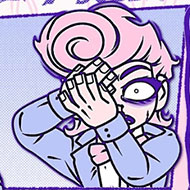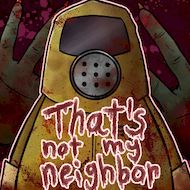

That’s Not My Neighbor is a tension-driven horror simulation where players are tasked with a deceptively simple job: managing entry into an apartment building. At first glance, the role feels straightforward—check documents, compare details, and decide who gets inside. But the situation quickly unravels when you realize that not everyone waiting at the door is who they claim to be.
Hidden among the ordinary tenants are impostors, entities that mimic human appearance with eerie accuracy. Spotting the subtle differences between a true resident and a disguised intruder becomes the core challenge, and every mistake carries unsettling consequences.
The mechanics of That’s Not My Neighbor combine elements of puzzle-solving, deduction, and observation. Each visitor presents identification or a claim, and it is up to the player to determine whether they are legitimate. Documents may contain inconsistencies, details may be slightly off, or behavior may seem unusual. Unlike traditional horror games, the threat here is psychological—the tension comes from deciding under pressure, never knowing if you are letting danger slip through the door.
Central to the game is the concept of impostors—creatures or entities that blend in almost perfectly with humans. Their disguises are convincing but never flawless. Some might have mismatched details on their documents, others may behave unnaturally, and a few will deliberately try to distract or manipulate the player. Part of the horror lies in the fact that mistakes are inevitable, and each wrong choice intensifies the paranoia of who might be waiting at the door next.
The setting of That’s Not My Neighbor is deliberately minimalistic, emphasizing the repetitive task of checking doors and documents. But beneath the surface of routine, the tension grows with each visitor. Background sounds, subtle distortions in visuals, and unexpected events all contribute to an atmosphere of creeping dread. The longer you play, the more you question your own perception. Is the person in front of you really who they claim to be, or are you about to let danger inside?
Though sessions are often short, replayability comes from the randomization of visitors, the unpredictability of impostors, and the player’s growing paranoia. Each attempt sharpens observation skills but also amplifies the psychological weight of decision-making. Over time, the experience becomes less about winning and more about confronting the unsettling idea that danger can hide in plain sight.
By combining observation puzzles with horror elements, That’s Not My Neighbor delivers an experience where suspense comes not from loud scares, but from the quiet dread of decision-making under pressure. It is a game about vigilance, trust, and the unsettling possibility that even the most ordinary face could conceal something terrifying.